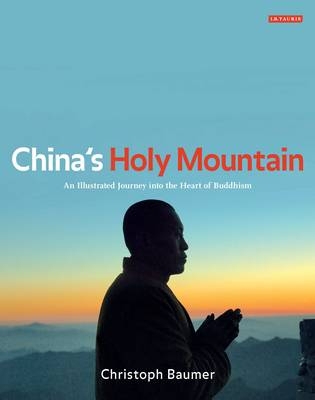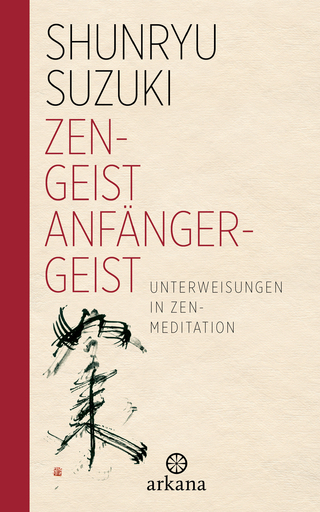
China's Holy Mountain
I.B. Tauris (Verlag)
978-1-84885-700-1 (ISBN)
Rising from Shanxi Province like a three-dimensional mandala, the soaring peaks of Wutai Shan ('Five-terrace Mountain') have inspired pilgrims and travellers for almost two millennia. A striking terrain of towering emerald forests, wraith-like mists and crenellated ridges, this consecrated and secluded site is said to be the spiritual home of Wenshu Pusa, Bodhisattva of Wisdom. It is one of the most venerable and important Buddhist sanctuaries in China, yet still remains relatively little known in the West. Christoph Baumer has travelled extensively in the Wutai Shan region, and here offers the first comprehensive account of the cradle of Chinese Buddhism. In his remarkable new travelogue, 300 luminous photographs capture the unique spirituality of the 60 monasteries which straddle the complex. Charting festivals, rituals, pilgrimages and the daily life of the monks, abbots and abbesses, 'China's Holy Mountain' is both a splendid introduction to the history of Buddhism in East Asia and an evocative and lavishly-illustrated gazetteer of the monasteries and sacred artefacts themselves.
It will be an indispensable resource for students of Asian religion and philosophy, with further appeal to general readers.
Christoph Baumer - a leading explorer of Central Asia, Tibet and China - has written several well-received books in the fields of history, religion, archaeology and travel. These include The Church of the East: An Illustrated History of Assyrian Christianity (2006) and Traces in the Desert: Journeys of Discovery across Central Asia (2008), both published by I.B.Tauris. Dr Baumer is President of the Society for the Exploration of EurAsia and a member of the Explorer's Club, New York, and the Royal Asiatic Society and the Royal Geographical Society, London.
Glossary
Foreword
I. Introduction
II. The spiritual and historical context
Origins of China’s cultural development
The veneration of heaven
The Hundred Schools of Thought
Confucius and the belief in morality and education
Mengzi and the goodness of human nature
Mozi and the state-mandated universal love of humanity
The Legalists and the rule of lawn
China’s first emperor makes a pilgrimage to a sacred mountain
Daoism and non-action
Confucianism as state ideology
Daoism becomes a religion
III. The spread of Buddhism to China
Challenges of the early Buddhist scholars of China
The development of Indian Buddhism
Hinayana and Mahayana, the Lesser Vehicle and the Great Vehicle
Yüezhi and Central Asian translators in China
Revolutionary aspects of Buddhism
The critique of the Confucians
The ‘Festival of the Hungry Ghosts’
IV. The ‘Barbarian Emperors’ elevate Buddhism to the state religion
Religion, politics and art
Aristocratic Buddhism in southern China
Folk Buddhism and state religion in northern China
The missionary and magician Fotudeng converts a TurkoMongol people
The Northern Wei and the cave temples of Yungang
The development of Buddhist sculpture before the Sui Dynasty
Kumarajiva and Buddhabhadra debate the Buddha-nature
V. The Ten Schools of Chinese Buddhism
The further development and new direction of Buddhism
1. Sanlun Zong
2. Niepan Shi
3. Jushe Zong
4. Tiantai Zong
5. Huayan Zong
6. Weishi Zong
7. Lü Zong
8. Mi Zong
9. Jingtu Zong
10. Chan Zong
VI. The nine sacred mountains of China and Mount Wutai Shan
The sacred landscape of Wutai Shan and its numerical symbolism
Wenshushili Pusa
The history of Wutai Shan
VII. Pilgrimage routes to the Five Terrace Mountain: The Outer Regions
The southwestern outer region
Nanchan Si ???
Hongfu Si ???
Foguang Si ???
Zunsheng Si ???
The northwestern outer region
The luohans
Huayan Si, Datong ???
Mu Ta ??
Bairenyan Si ????
Huiji Si ???
Ayuwang Ta ????
Zhao Gao Si ???
Yan Shan Si ???
Gong Zhu Si ???
VIII. The five terraces and their monasteries
The northern terrace Beitai ?? and Lingying Si ???
Dragons, clouds and bodhisattvas
The eastern terrace Dongtai ??, Wanghai Si ??? and Nayuolan Dong ????
The southern terrace Nantai ?? and Puji Si ???
The western terrace Xitai ?? and Falei Si ???
The central terrace Zongtai ?? and Yanjiao Si ???
IX. The monastery city of Taihuai ????
Xiantong Si ???
The spatial arrangement of monasteries
Tayuan Si ???
Pusading Si ????
Wutai Shan – Bridgehead of Tibetan Buddhism in China
Wanfo Ge ???
Historical panoramic map of Wutai Shan
Guangren Si ???
The most important monastic festivals
Luohou Si ?[??]?
Yuanzhao Si ???
Guangzong Si ???
Guanghua Si ???
Pushou Si ???
Santa Si ???
Cifu Si ???
Sanquan Si ???
Shouning Si ???
Self-immolation and self-mutilation as the greatest sacrifice
X. The North
Bishan Si ???
The consecration ceremony of monks and nuns
Jingang Ku ??? and the Wulang ?? ancestor shrine
Jifu Si ???
Qifo Si ???
Guangming Si ???
Baohua Si ???
The ‘Great Proletarian Cultural Revolution’
Miaoding An ???
Zhaoyuanwai Tang ????
XI. The East
Shangshi Tayuan Si ?????
Shancai Dong ???
Shangshancai Dong ????
Dailuoding Si ????Wenshu Si ???
Puhua Si ???
Guanyin Dong ???
Huayan Dong ???
Wenshu Dong ???
Tiewa Si ???
XII. The South
Shuxiang Si ???
Lingying Si ???
Lingfeng Si ???
Wanfo Dong ???
Nanshan Si ???
Youguo Si ???
The Eight Immortals of Daoism
Zhenhai Si ???
Wanyuan An ???
Mingyue Chi ??? and Jingang Bao Ta ????
Puan Si ????
Abbess Shi Chang Long
Bayun Si ???
Buddha Shakyamuni’s birthday celebration in Bayun Si
Fomu Dong ???
Lingjing Si ???
Baitou An ???
Guandi Si ???
Haihui An ???
Jingang An ???
Gufo Si ???
XIII. The West
Ruiying Si ???
Fenglin Si ???
Yuhua Si ???
Jixiang Si ???
Longquan Si ???
Linggong Ta ???
Zhulin Si ???
The Japanese pilgrim monk Ennin and Wutai Shan
Shiziwo Si
| Erscheint lt. Verlag | 19.9.2011 |
|---|---|
| Zusatzinfo | full colour throughout |
| Sprache | englisch |
| Maße | 237 x 289 mm |
| Gewicht | 2473 g |
| Themenwelt | Geisteswissenschaften ► Religion / Theologie ► Buddhismus |
| ISBN-10 | 1-84885-700-4 / 1848857004 |
| ISBN-13 | 978-1-84885-700-1 / 9781848857001 |
| Zustand | Neuware |
| Haben Sie eine Frage zum Produkt? |
aus dem Bereich


